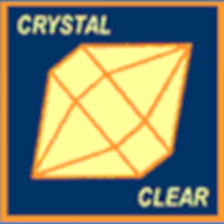The aim of the ClearPET project was to apply the non-invasive PET technique to in vivo imaging of the small animals like mice and rats or in vivo investigations of signal transduction in non-human primates under physiological conditions. The ClearPET system is a high performance PET scanner combining high resolution and high sensitivity by using new technologies in crystals and electronics. It was especially developed and designed for dynamic studies of mice and rats with a high spatial resolution. Additionally the ClearPET system also offers the possibility to measure larger animals due to its variable detector diameter. The cassettes can be arrested in two positions which result in two detector diameters of 140 and 260 mm and two animal ports of 125 and 245 mm respectively.
ClearPET Scanner
The system consists of 80 detector modules split up in 20 detector cassettes which are arranged in a ring configuration. Every other cassette is shifted by 7mm, ¼ of a PMT length, to linearize the axial sensitivity profile of the scanner. The gantry allows rotation over 360 degrees for a more homogeneous sampling of the field of view. Furthermore two different detector diameters are feasible, which allow to perform whole body studies of mice and rats using the small diameter as well as brain studies of large primates using the large diameter. This means that the ClearPET System allows to measure all small animals with only one scanner.
Detector Cassette
A unit of four detector modules arranged in-line represents one of 20 detector cassettes including the corresponding front-end electronics: analogue and decoder boards in the front, one FPGA board, one slow control and finally an opto link transmitter board to send the data from the gantry to the first pre-processing PCs. The detector modules are light and water shielded by a specially designed plastic cap.
Detector Module
Phoswich arrangements of 8 x 8 LYSO and LuYAP:Ce crystals, 2 x 2 x 10mm3 each, are coupled to multi-channel photomultiplier tubes (Hamamatsu R7600). Using these depth-of-interaction (DOI) matrices enables the combination of high sensitivity (20 mm total crystal thickness) and high resolution.
Four machines were developed inside the Collaboration:
- One in Brussels (Belgium)
- One in Julich (Germany)
- One in EPFL (Lausanne, Switzerland) - now at CPPM (Marseille, France)
- One in Korea (ClearPET Petite).
The ClearPET was licensed to the Raytest company (Germany).
